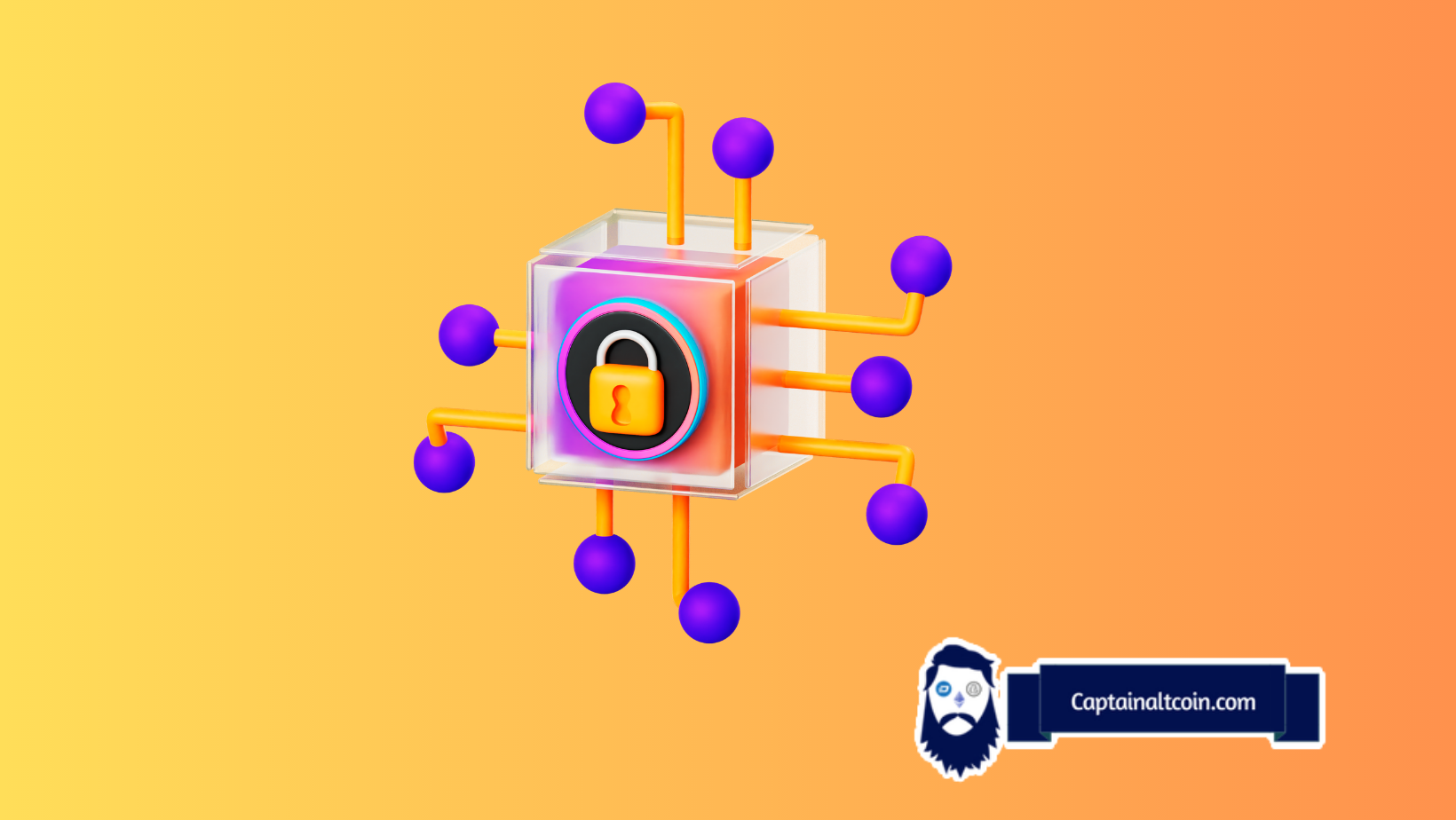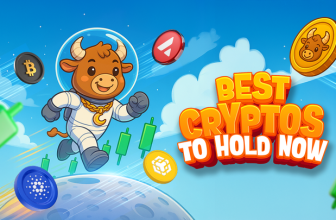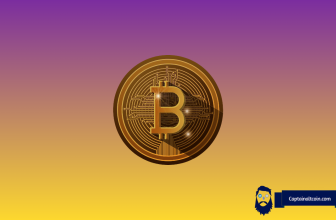
The decentralized finance landscape has matured dramatically in 2025, with over 560 million people now owning cryptocurrencies globally. As DeFi protocols become increasingly sophisticated, the wallet you choose to interact with them matters more than ever. The right web3 wallet doesn’t just store your assets—it serves as your gateway to lending protocols, liquidity pools, yield farming opportunities, and the entire decentralized ecosystem.
Today’s best web3 wallet solutions prioritize three critical elements: enhanced user experience through account abstraction, multi-chain interoperability to navigate the fragmented blockchain landscape, and robust security features that protect against increasingly sophisticated threats. Whether you’re a DeFi veteran managing complex positions across multiple protocols or a newcomer taking your first steps into decentralized finance, choosing the best defi wallet app can mean the difference between frustration and seamless on-chain experiences.
This guide examines five exceptional wallets that represent the cutting edge of Web3 technology in 2025. Each offers unique advantages for DeFi users, from beginner-friendly interfaces that eliminate traditional crypto complexity to advanced features that satisfy the needs of power users. We’ve evaluated these wallets based on security architecture, DeFi integration capabilities, multi-chain support, user experience design, and real-world performance across popular protocols.
What you'll learn 👉
1. walllet.com – The Beginner-Friendly DeFi Gateway
walllet.com has emerged as a game-changer in the crypto wallet space by completely eliminating one of the biggest barriers to crypto adoption: seed phrases. For users who want to explore DeFi without the intimidation factor of traditional wallets, this represents a fundamental shift in accessibility.
What Makes walllet.com Stand Out
Rather than forcing users to manage complex 12 or 24-word recovery phrases, walllet.com leverages proven security technologies from Apple, Google, and the FIDO alliance to offer institutional-grade security through familiar biometric authentication methods. This approach removes the primary source of anxiety for new DeFi participants while maintaining the security standards expected in 2025.
The wallet’s Account Abstraction feature revolutionizes the user experience by enabling gasless transactions where users can pay gas fees with the token they’re already using rather than needing to keep small balances of native coins everywhere. If you’re swapping USDC on Base or Arbitrum, you can pay the network fees directly in USDC—no need to maintain separate ETH balances across every chain you use.
Key Features for DeFi Users
- Human-Readable Transactions: Before signing any transaction, walllet.com displays a plain-language summary showing the exact action, asset amount, slippage tolerance, permissions being granted, counterparty information, and network details. This transparency is crucial when interacting with DeFi protocols where a single misunderstood approval can compromise your entire wallet.
- Optimized Stablecoin Support: walllet.com is specifically designed for users who want to use crypto practically rather than just as an investment, with excellent support for stablecoins and daily payments. This makes it ideal for DeFi strategies focused on stable yield generation through lending protocols or liquidity provision.
- Multi-Chain DeFi Access: The wallet supports major DeFi chains including Ethereum, Polygon, Arbitrum, Optimism, and Base, allowing you to pursue yield opportunities across the entire EVM ecosystem without managing multiple wallets.
- Smart Gas Management: Pay transaction fees with any supported token, eliminating one of crypto’s most frustrating user experience problems and making it easier to move between different DeFi protocols.
Best For: Newcomers to DeFi who prioritize simplicity and daily usability, stablecoin enthusiasts, and anyone frustrated by traditional seed phrase management. Not positioned as a pro-trading tool but rather as an accessible on-ramp to DeFi participation.
2. Ledger – Industry-Leading Hardware Security for DeFi
Ledger has maintained its position as the gold standard in cryptocurrency security since 2014, with over 8 million hardware wallets sold that have never been hacked. Today, Ledger devices safeguard 20% of global crypto value, making them the trusted choice for serious DeFi participants managing substantial positions.
Hardware Security Meets DeFi Accessibility
Ledger hardware wallets store private keys offline within an EAL6+ certified Secure Element chip, giving users full control and enhanced security while still enabling seamless interaction with DeFi protocols through the Ledger Live app. This combination of cold storage security with hot wallet convenience makes Ledger uniquely positioned for DeFi users who refuse to compromise on security.
The 2025 lineup includes four distinct models catering to different needs: the affordable Nano S Plus ($59), the Bluetooth-enabled Nano X ($149), and the premium Flex and Stax featuring E-Ink touchscreens and wireless charging.
DeFi Integration Excellence
If you’re into DeFi, Ledger Live has you covered with token swaps on decentralized exchanges like Uniswap, ParaSwap, and 1inch to get the best deals, staking services like Lido or Kiln for Ethereum rewards, and lending/borrowing through apps like Yearn to boost yields. The Zerion-powered DeFi Dashboard tracks all your assets and activities in one place, providing a comprehensive view of your positions across protocols.
Key DeFi Features
- Clear Signing Technology: Ledger devices now require clear signing, eliminating blind signing that led to the catastrophic $1.5 billion Bybit hack in February 2025. Every transaction displays human-readable details directly on the device screen, ensuring you know exactly what you’re approving.
- Comprehensive Asset Support: With support for 5,500+ cryptocurrencies and tokens across multiple blockchains, Ledger handles everything from blue-chip DeFi tokens to emerging protocols and exotic yield farming positions.
- Third-Party DApp Integration: Beyond Ledger Live’s native integrations, the hardware wallet works seamlessly with MetaMask, Coinbase Wallet, Phantom, and countless other interfaces, giving you flexibility in how you access DeFi protocols.
- Staking Rewards: Directly stake ETH, SOL, ATOM, TON, and numerous other tokens through Ledger Live, with the security of knowing your keys never leave the device.
Best For: Security-conscious DeFi users managing significant portfolios, long-term holders who actively participate in DeFi, and anyone who considers hardware-level security non-negotiable for their on-chain activities.
3. Ambire – Account Abstraction Pioneer for Advanced DeFi
Ambire proposes a secure universal wallet with a UI that’s informative and easy to understand by anyone, but with highly advanced DeFi features like an in-built bridge, earn and swap functions, as well as a dApp Catalog, making it a smooth tool also for whales and deep-divers in crypto.
Pioneering Hybrid Account Abstraction
Ambire Wallet’s hybrid account abstraction offers a robust solution to crypto self-custody challenges by integrating both Externally Owned Accounts (EOAs) and Smart Accounts, with full EIP-7702 support that unlocks smart account features to existing accounts. This technical innovation puts Ambire at the forefront of the 2025 wallet evolution, addressing the fragmentation that has historically plagued the Web3 experience.
Revolutionary Gas Tank Feature
Ambire has pioneered gas abstraction with its unique “Gas Tank” feature—essentially a separate account within your wallet that can be topped up with approximately 100 different tokens on major chains and then used on whichever chain you like, with the balance consolidated in USDC. This eliminates the frustrating need to maintain native token balances across every chain you interact with, dramatically simplifying multi-chain DeFi participation.
Advanced DeFi Capabilities
- Transaction Simulation: Ambire Wallet utilizes advanced on-chain simulation, displaying the outcome of your actions in a human-readable format so you see your future account balance before signing the transaction, helping detect unauthorized contract actions. This proactive security measure is invaluable when experimenting with new DeFi protocols.
- Batch Transactions: Execute multiple actions simultaneously—approve token spending and complete your swap in a single transaction, saving both time and gas fees.
- Hardware Wallet Integration: Ambire Wallet supports industry-leading hardware wallets like Ledger, Trezor, and Grid for enhanced security, allowing you to maintain cold storage security while enjoying smart account benefits.
- Cross-Chain Bridge: The Ambire extension allows you to swap, bridge, or bridge and swap at the same time, all without leaving the window, with recommendations for the best route.
- DeFi Position Tracking: Check your DeFi positions in Uniswap and Aave directly within the wallet—monitor if your liquidity is in range and check your health factor with a single click.
Best For: DeFi power users who operate across multiple chains, yield farmers managing complex positions, and technically savvy users who appreciate cutting-edge account abstraction technology.
4. SafePal – Comprehensive Hybrid Solution for DeFi Enthusiasts
SafePal supports over 30,000 cryptocurrencies and 100+ blockchains across software and hardware devices, with a user base that jumped from 10 million to 20 million users in 2024. This rapid growth reflects the wallet’s successful combination of security, versatility, and user-friendly design.
Flexible Security Options
SafePal offers a unique hybrid approach that lets users choose their preferred security model. The air-gapped S1 hardware wallet operates completely offline with no Bluetooth, WiFi, or NFC connections, providing maximum security for long-term holdings. Meanwhile, the newer X1 model adds Bluetooth 5.0 connectivity for more convenient everyday use, and the mobile/browser extension options enable seamless DeFi interactions.
Comprehensive DeFi Ecosystem
SafePal includes features like staking, NFT storage, a dApp browser, and a fiat-to-crypto banking gateway, with users able to earn passive income through SafePal Earn, which offers staking and DeFi liquidity pool access. The platform acts as a complete DeFi hub rather than just a storage solution.
Key DeFi Features
- Multi-Chain DeFi Access: Decentralized exchanges captured a record 30% of global crypto spot trading volume in June 2025, and SafePal positions itself to capitalize on this trend with comprehensive DEX integration.
- EAL5+ Secure Element: All SafePal devices feature bank-grade security chips with self-destruct mechanisms that wipe data if tampering is detected, protecting your DeFi positions from physical attacks.
- DApp Browser: Access thousands of decentralized applications directly through SafePal, from lending protocols like Aave and Compound to yield aggregators and beyond.
- SafePal Bank: The SafePal Bank feature bridges traditional finance and DeFi, allowing users to convert fiat currencies to crypto and vice versa using a fully compliant Swiss bank account.
- Native Token Benefits: The SFP token provides fee discounts on SafePal products and access to exclusive features within the ecosystem.
Best For: DeFi users who want flexibility between hot and cold storage, portfolio diversifiers managing positions across numerous chains, and users seeking an all-in-one platform for trading, staking, and DeFi participation.
5. Ctrl – Multi-Chain DeFi Powerhouse
Ctrl supports more blockchains, assets, and NFTs than any wallet on earth, with coverage across 2,500+ blockchains including all EVM chains, Cosmos ecosystem, Solana, Bitcoin, TRON, THORChain, and more. This unprecedented multi-chain support makes Ctrl the ultimate tool for DeFi participants who refuse to be limited by ecosystem boundaries.
Universal Chain Coverage
Since 2015, non-custodial wallet design has seen little evolution, but Ctrl represents a significant advancement in web3 wallet usability, enabling users to access DeFi and web3 services across multiple chains and manage their digital assets with ease. The wallet’s architecture allows seamless interaction with DeFi protocols regardless of which blockchain they operate on.
Innovative Gas Management
Like walllet.com and Ambire, Ctrl implements gas abstraction through its Gas Tank feature. Users can deposit USDC into their Gas Tank and Ctrl Wallet will automatically handle gas payments across major chains, eliminating the need to maintain native tokens on every network. Additionally, the wallet accepts payment in CTRL tokens for gas fees across all supported blockchains.
DeFi-Focused Features
- Unified Portfolio View: Manage all your assets from all your accounts on all chains in one unified dashboard, including the ability to integrate assets from centralized exchanges while keeping everything safe and accessible.
- Lightning-Fast Setup: Get started using social logins in less than 15 seconds without managing seed phrases, making DeFi accessible to Web2 users.
- Comprehensive DeFi Integration: Provide liquidity unilaterally in more than 15,000 EVM liquidity pools, deposit LP tokens in more than 3,000 farms, access THORChain Savers Vaults, and swap more than 10,000 tokens across 15 chains.
- Cross-Chain Swaps: Execute trades across different blockchains without leaving the wallet interface, capitalizing on yield opportunities wherever they emerge.
- Hardware Wallet Compatibility: Despite the focus on user-friendliness, Ctrl maintains support for Ledger and Trezor hardware wallets for users who want maximum security.
Best For: Cross-chain DeFi maximalists, yield chasers who pursue opportunities across multiple ecosystems, and users frustrated by the limitations of single-chain or limited-chain wallets.
Choosing the Best Web3 Wallet App for Your DeFi Strategy
Selecting the optimal wallet depends on your specific DeFi objectives and technical comfort level. Consider these factors:
- Security vs. Convenience Trade-offs — Hardware wallets like Ledger offer maximum security but require extra steps for each transaction. Software wallets provide instant access but demand more vigilance. Hybrid approaches like SafePal or integrating hardware wallets with software interfaces (as supported by Ambire and Ctrl) offer middle-ground solutions.
- Multi-Chain Requirements — If your DeFi strategy spans multiple blockchains, wallets like Ctrl with comprehensive chain support or Ambire with efficient cross-chain tools will save significant time and frustration. Single-ecosystem participants might prioritize depth of integration over breadth of coverage.
- User Experience Priorities — Beginners benefit from simplified interfaces and features like gas abstraction (walllet.com, Ambire, Ctrl) and clear transaction explanations. Advanced users appreciate tools like transaction simulation (Ambire), batch operations, and comprehensive analytics.
- Portfolio Size Considerations — Larger portfolios justify the cost and complexity of hardware wallets (Ledger, SafePal). Smaller, more active positions might benefit from the speed and flexibility of pure software solutions with strong security practices.
How to Maximize Your DeFi Wallet Security
Regardless of which wallet you choose, implement these security practices:
Transaction Verification: Always review transaction details carefully, especially when interacting with new protocols. Use wallets that provide clear signing or transaction simulation features to understand exactly what you’re approving.
Permission Management: Regularly audit and revoke unnecessary token approvals. Many DeFi hacks exploit unlimited allowances granted to malicious contracts. Tools like revoke.cash can help identify risky permissions.
Diversification: Don’t keep all assets in a single wallet. Use hardware wallets for long-term holdings and software wallets for active DeFi participation. This compartmentalization limits exposure if any single wallet is compromised.
Phishing Awareness: Always access wallets through official websites or apps. Bookmark legitimate URLs and verify contract addresses on block explorers before interacting with new protocols.
Regular Updates: Keep wallet software updated to benefit from the latest security patches and features. This is particularly important for browser extensions and mobile apps.
Understanding DeFi Wallet Types and Technologies
The evolution of DeFi wallets in 2025 has introduced several technological innovations worth understanding:
Account Abstraction: Account abstraction simplifies Web3 interactions by using smart contracts for wallet management, allowing users to recover access via biometric data, eliminating seed phrases, and enabling transaction fees to be paid in various tokens. Wallets like walllet.com and Ambire leverage this technology to dramatically improve user experience.
Gas Abstraction: Traditional wallets require users to maintain native tokens (ETH, MATIC, BNB, etc.) on every chain to pay transaction fees. Gas abstraction allows payment in stablecoins or other tokens, eliminating this friction point and making multi-chain DeFi participation more practical.
Multi-Party Computation (MPC): MPC wallets split private keys into encrypted shares distributed across multiple parties or devices, ensuring that no single entity can compromise the key. This technology provides enhanced security without sacrificing the convenience of software wallets.
Hardware Security Elements: Hardware wallets use Secure Element chips that are also used for credit cards and passports, generating and storing private keys while preventing physical extraction. These chips carry security certifications like EAL5+ or EAL6+, indicating rigorous testing against various attack vectors.
The Future of DeFi Wallets: Trends Shaping 2025 and Beyond
The wallet landscape continues evolving rapidly. Key trends include:
Increased Regulatory Clarity: Regulatory clarity in jurisdictions like Singapore and Japan is fueling adoption, while U.S. SEC and IRS reporting requirements for digital assets have pushed businesses to adopt secure wallet infrastructure to avoid penalties.
TradFi-DeFi Convergence: The tokenization of real-world assets is set to revolutionize traditional finance, with the market projected to reach $500 billion in 2025, and institutional players like BlackRock, JPMorgan, and Goldman Sachs actively exploring blockchain-based tokenization. Wallets are adapting to support these new asset classes.
AI Integration: AI-driven vulnerability detection in development pipelines and on-chain threat monitoring enable more robust defenses against increasingly sophisticated attacks. Future wallets will likely incorporate AI assistants for transaction analysis and risk assessment.
Enhanced Interoperability: The rise of cross-chain interoperability protocols like Polkadot and Cosmos is amplifying the growth of Web3 wallet security, with these technologies supporting over 700,000 monthly active users as wallets enable seamless multi-chain interactions.
Conclusion
The best defi wallet app for your needs depends on your unique combination of security requirements, DeFi activity patterns, technical expertise, and blockchain preferences. walllet.com excels at making DeFi accessible to newcomers through its seedless design and intuitive interface. Ledger remains the gold standard for users who prioritize hardware-level security above all else. Ambire pushes the boundaries of what’s possible with account abstraction and smart account features. SafePal offers the flexibility of hybrid security approaches. And Ctrl delivers unparalleled multi-chain coverage for cross-ecosystem DeFi participation.
With over 560 million people now owning cryptocurrencies and Web3 usage continuing to expand, 2025 represents a pivotal year for DeFi adoption. The wallets profiled here represent the cutting edge of this evolution, each approaching the challenge of secure, user-friendly DeFi access from different angles.
The most important decision isn’t necessarily choosing the “best” wallet in absolute terms, but selecting the one that aligns with your specific needs, technical comfort level, and DeFi strategy. Consider starting with a beginner-friendly option like walllet.com to learn the ropes, then potentially graduating to more advanced solutions as your needs evolve. Many successful DeFi participants use multiple wallets in combination—hardware wallets for long-term holdings, feature-rich software wallets for active protocol interaction, and specialized solutions for specific chains or use cases.
Whatever you choose, prioritize security practices, stay informed about emerging threats, and never invest more in DeFi protocols than you can afford to lose. The decentralized finance revolution continues to unfold, and having the right web3 wallet is your essential first step to participating in this financial transformation.
Disclaimer: This content is for informational purposes only and should not be construed as financial advice. Cryptocurrency investments carry significant risks. Always conduct thorough research and consider consulting financial advisors before making investment decisions.








